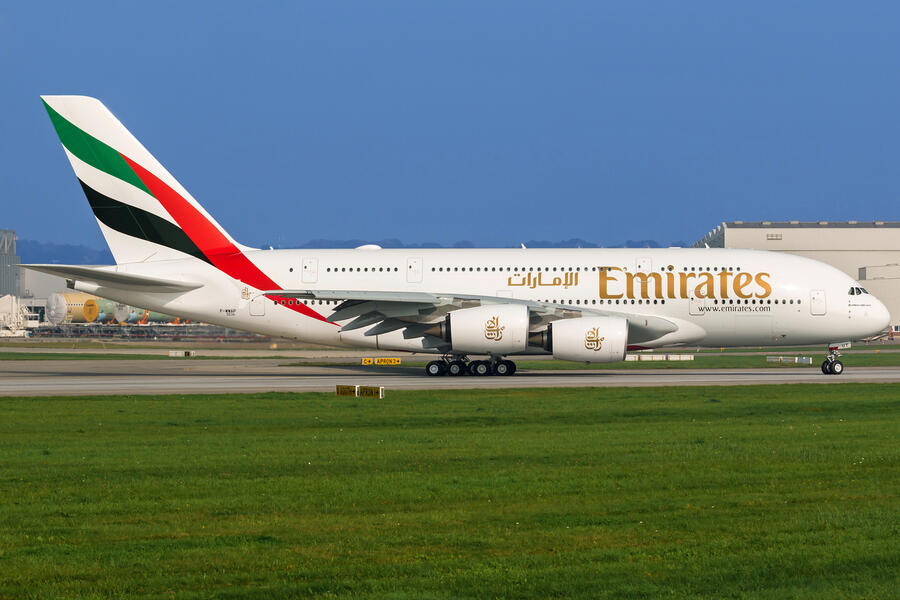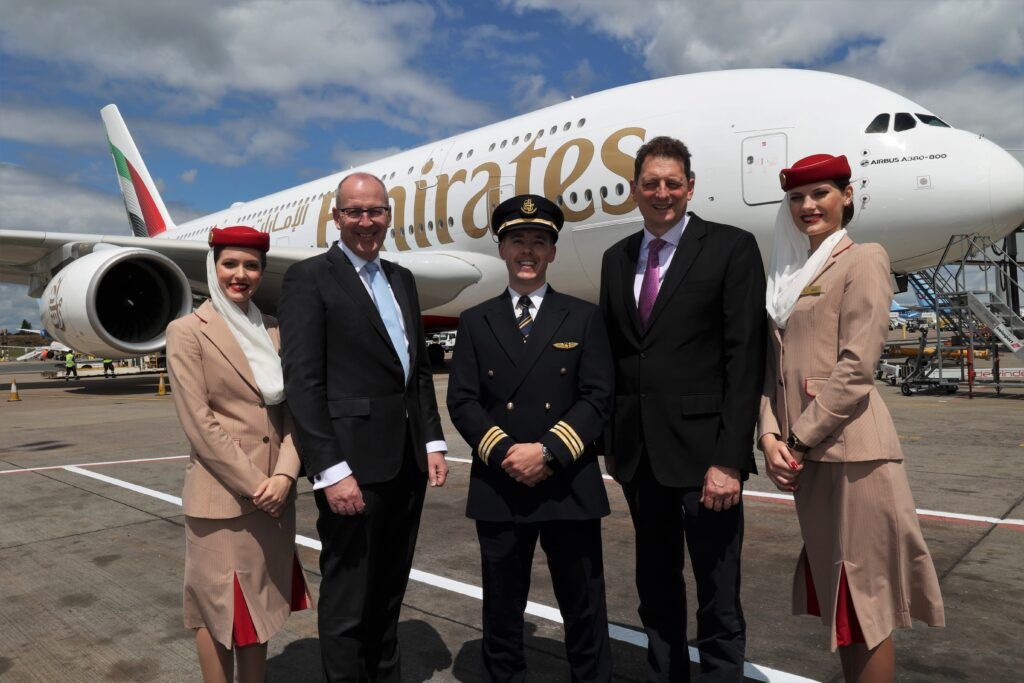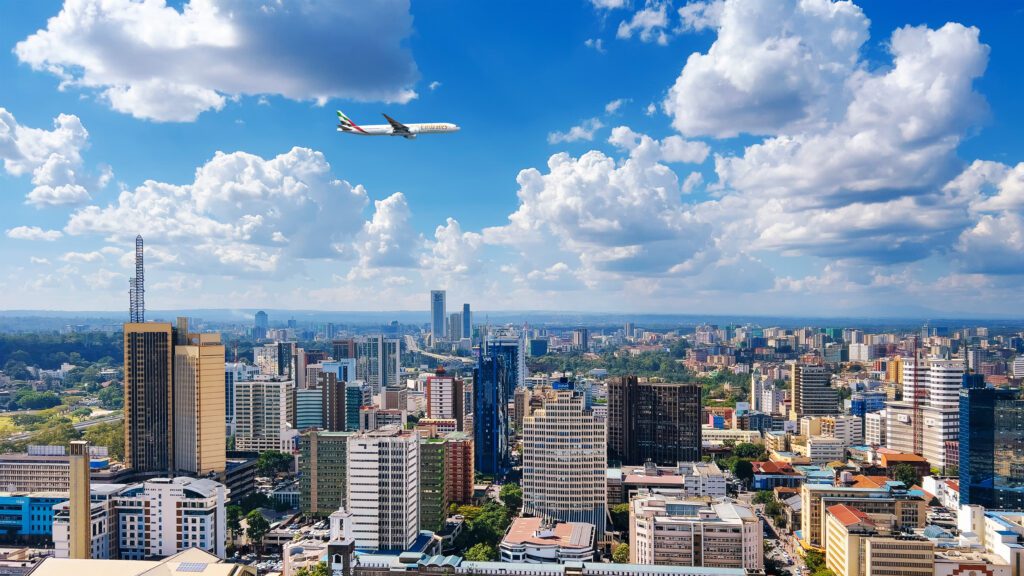A Milestone Moment for Global Connectivity
Three decades ago, the global airline Emirates launched its inaugural flight to Nairobi, Kenya. Over the past 30 years the airline has grown alongside the city, forging not just transport links but meaningful connections between continents, cultures and economies. This milestone is more than a celebratory figure—it’s a reflection of sustained trust, innovation and shared vision.
From a Single Route to a Mighty Corridor
Emirates began its journey to Nairobi in October 1995, opening a gateway between Kenya’s capital and the broader world. Since then the airline has carried over 6.6 million passengers to and from Nairobi, across more than 34,250 flights.
What started as a connection between two cities has evolved into a vibrant corridor linking Nairobi with more than 145 countries on Emirates’ global network.
Over the years the carrier has served inbound traffic from Asia, Australasia (including South Korea, China, Thailand and Australia) and ultra-long-haul travellers from the United States. At the same time, Kenyan travellers have been able to connect with destinations such as Shanghai, Beijing, Melbourne, Brisbane, Sydney, Seattle, New York and Washington.
Elevating the Passenger Experience
Emirates has consistently invested in its product and service to ensure that flying to and from Nairobi offers more than simple transportation—it offers an experience. The airline remains the only one serving Kenya that provides private, enclosed First-Class cabins. Economy and Business cabins benefit from generous baggage allowances (for example two bags of 23 kg each in Economy, two bags of 32 kg each in First and Business) per traveller. Onboard menus are regionally inspired and curated by award-winning chefs. The inflight entertainment system offers more than 6,500 channels including Kenyan movies, TV shows and music.
The result has been a travel experience where Kenyan customers feel valued, and international travellers feel welcome.

Strong Partnerships & Local Impact
The relationship between Emirates and Kenya goes beyond passenger flights. In 2023 the airline signed an interline partnership with Kenya’s flag-carrier Kenya Airways, enabling seamless one-ticket itineraries to some of the most in-demand destinations across East Africa. In just two years this partnership has already seen 31,000 passengers benefit, with roughly equal numbers of Kenya Airways and Emirates travellers.
Emirates’ cargo division, Emirates SkyCargo, has also supported Kenya’s agricultural and export industries. Kenya is among the world’s top four flower-producing countries (roses, carnations, chrysanthemums) and SkyCargo transported over 16,000 tonnes of fresh cut flowers in one year, delivering farm to florist in as little as 24 hours. This facilitation of trade strengthens local economies and deepens Kenya’s role in global supply chains.

Investing in People and Community in Kenya
Emirates’ commitment to Kenya extends into jobs, skills and community initiatives. In Nairobi, the airline has a 50-person staff, and globally over 1,100 Kenyan nationals work with the Emirates Group in roles from HR to marketing, cabin crew and pilots (254 Kenyans serve as cabin crew, and 41 as pilots).
Beyond employment, Emirates supports three Kenyan humanitarian organisations (Little Prince Nursery & Primary School, Alfajiri Street Kids, Starehe Boys’ Centre) through its foundation, helping children’s education, rehabilitation, art therapy and scholarships for under-privileged boys. This human-centric involvement underscores that the airline’s footprint goes deeper than terminals and runways.

What the Future Holds for Nairobi and Beyond
Looking ahead, the 30-year celebration isn’t just about reflecting—it’s about accelerating. Nairobi, as one of Africa’s fastest-growing cities, remains a strategic hub. With expanding tourism, corporate travel and trade flows, Emirates is well placed to serve evolving demands.
For Kenyan travellers the focus continues on connectivity, comfort and value. For inbound visitors the aim is seamless access to East Africa’s wonders, whether for safari, business or culture. For local industry the partnership offers a strong export channel and employment pathway.
Emirates’ presence in Kenya also contributes to deeper UAE–Kenya economic ties, supported by a Comprehensive Economic Partnership Agreement and growing bilateral trade.
Why This Matters to Kenya’s Travel and Trade Ecosystem
The milestone of 30 years with Emirates has cascading benefits. It signals stability and confidence in Kenya’s aviation infrastructure. It helps raise standards of service and competition, which in turn benefits travellers. It amplifies Kenya’s global connectivity—important for tourism, business, diaspora and investment. It also reinforces Kenya’s role as a regional aviation hub for East Africa.
For many Kenyans and visitors this means easier access, better comfort and a broader choice of destinations. For local producers it means their goods reach global markets with speed and reliability, supported by sophisticated logistics.

A Story of Shared Success
When we look back at the journey from the first Emirates flight into Nairobi to today, it reads like a story of partnership and ambition. Emirates brought world-class aviation and service; Nairobi opened its doors to global travellers and exports; Kenya and the UAE built stronger commercial ties; communities gained through education and employment.
The celebration of 30 years is also a promise: to continue raising the bar and deepening ties. The airline’s country manager in Kenya emphasised that Nairobi has been a consistently busy destination on their African network, and that Emirates is proud to play a key role in Kenya’s aviation, tourism and trade journey—and remains committed for decades to come.
Taking Flight Into the Next Decade
In the coming years we can expect Emirates to deepen its presence in Kenya with more flights, possibly different aircraft types, enhanced local services (for example the first Emirates World Store in Africa is in Nairobi). There’s also likely to be even closer collaboration with Kenya Airways and regional carriers, opening up more destinations in East Africa and beyond.
For travellers the benefits could include more direct routes, upgraded cabins, improved lounge and ground-services, and more tailored partnerships. For Kenya, the benefits could include stronger tourism flows, deeper export reach, more jobs and greater integration into global networks.
In short, the 30-year mark is a springboard for what’s next—bigger ambitions, wider horizons and stronger bonds.
Final Reflection
As we mark this milestone, it’s worth pausing and recognising what 30 years of operations by Emirates in Nairobi represents. It is more than a number. It’s the smiling faces on board, the flowers departing Kenya under clear-blue skies, the business travellers arriving from thousands of miles away, the Kenyan families connecting to the world, the airport teams working behind the scenes and the communities supported through purpose-driven initiatives.
It’s a story of how aviation links places but also people—and how when those links are nurtured over time, the impact spreads far beyond the flight path. Nairobi and Emirates have grown together. As they look to the next decade, the journey promises to be just as meaningful—and perhaps even more transformational.
Do follow UAE Stories on Instagram
Read Next – UAE Economy Leads the Charge: IMF Sees 4.8% Growth, Abu Dhabi at 6%















